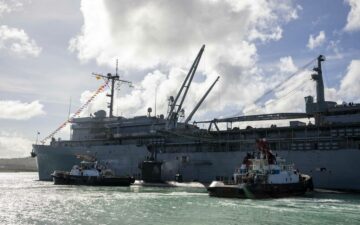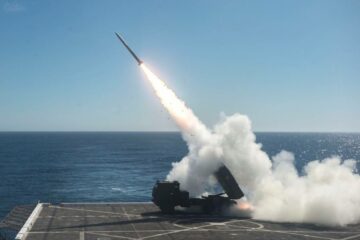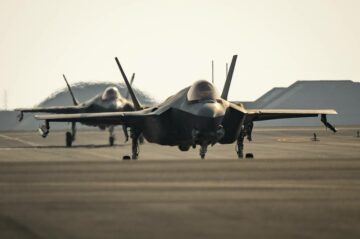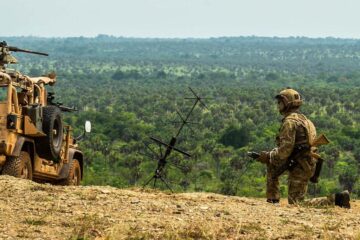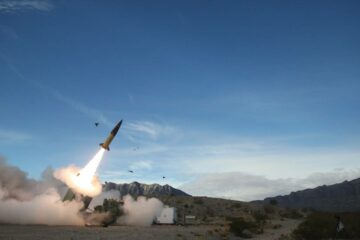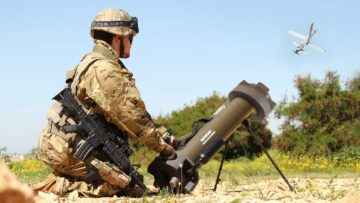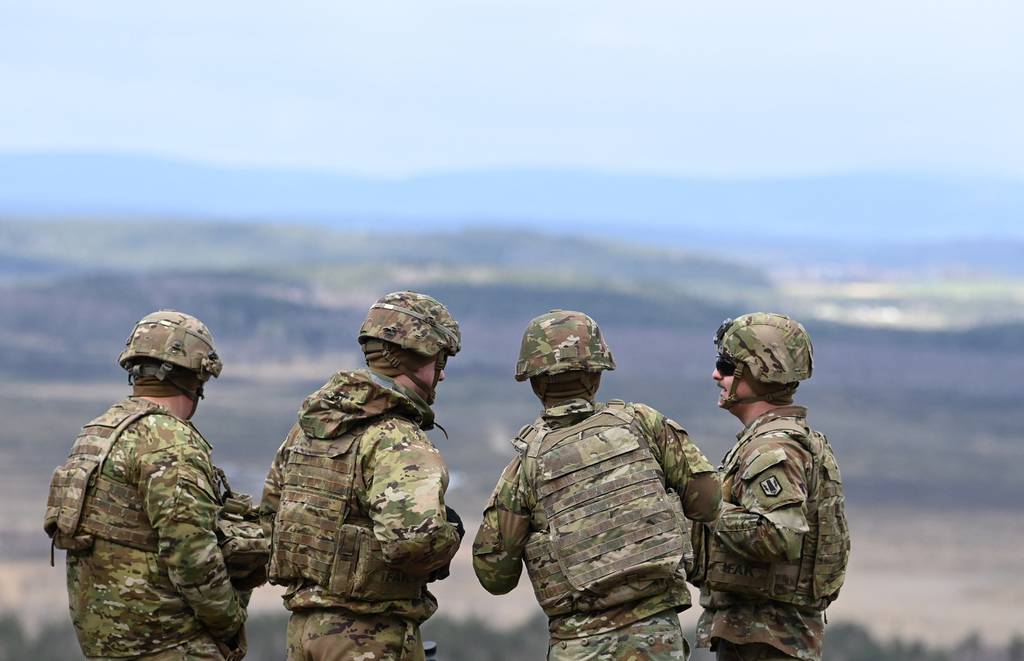
Two years after invading Ukraine again, Russian President Vladimir Putin has accomplished two things for NATO. First, he has helped to expand and reinvigorate the alliance; Sweden is set to join NATO. Second, and more concerning, he has deepened Europe’s dependence on the United States. That problem requires urgent attention.
Faced with an aggressive Russia, a war of attrition in Ukraine and uncertainty about U.S. reliability, anxious European allies are accelerating their defense spending. This year they are to collectively meet NATO’s target of spending 2% of gross domestic product on defense. And they have logged nine consecutive years of growth in their defense budgets.
Spending more, however, doesn’t necessarily mean spending well. NATO’s 2% goal is important as a baseline input metric, but it is unlikely to be enough to ensure that Europe strengthens its defenses before Russia reconstitutes its depleted forces. To assure that defense resources are spent well, some clear output metrics are needed to define what Europe’s military capabilities should be.
As the alliance continues its most urgent task — helping Ukraine win — it must address this important longer-term challenge of rebalancing trans-Atlantic defense. Doing so will mean squaring a triangle: ensuring Europe’s capacity to better defend itself against Russia and manage crises along its southern periphery; addressing European aspirations for greater strategic autonomy; and maintaining confidence that the United States can adequately uphold its commitments in both the North Atlantic and the Indo-Pacific region.
We have called squaring this triangle “achieving European strategic responsibility.”
In the past, Europe has sought “autonomy” without providing adequate defense resources, while the United States has wanted greater European defense contributions without diminishing U.S. influence. These tensions have been exacerbated by inadequate cooperation between U.S. and European defense industries.
NATO’s 75th anniversary summit in Washington this summer provides an opportunity to reconcile these two perspectives and find a new strategic balance. To do so, European allies should focus on achieving two military capability or output goals as quickly as possible.
First, Europe should build its conventional military capabilities to a level that would provide at least half of all the forces and capabilities — including the strategic enablers such as strategic lift, air-to-air refueling and operational intelligence — required to deter and, if needed, to defeat a major-power aggressor.
Should a conflict simultaneously break out with China in Asia and with Russia in Europe, the United States may not be able to deploy adequate reinforcements to Europe. European allies need to be able to pick up the slack.
Second, European allies should develop capabilities to conduct crisis management operations in Europe’s neighborhood without today’s heavy reliance on U.S. enablers. The European Union’s goal to develop the capacity to generate an “intervention force” of 5,000 individuals who could deploy beyond EU boundaries is a small yet useful start. Much more is needed.
Meeting these two output goals would allow Europe to become the first responder to most crises in its neighborhood, acting through NATO, through the EU or through ad hoc coalitions of the willing. It would permit the United States to shift some of its forces and strategic focus to the Indo-Pacific region without significant reduction in the capabilities needed to deter Russia.
To achieve these two output goals, NATO allies could agree at the summit to use NATO’s Defense Planning Process to create a minimum level of military ambition necessary to attain European strategic responsibility. European allies and Canada should firmly commit to investing sufficient resources to ensure that within a few years they can meet 50% of all of NATO’s minimum capability requirements. Similar informal goals already exist; now they should be formalized and implemented at the summit.
Doing half of what’s needed within the alliance is an absolute minimal requirement for Europe to attain strategic responsibility. It assumes the Europeans can still count on the Americans. But if former President Donald Trump wins the November election and reneges on America’s NATO commitments, doing half will not be nearly enough. So Europe should not delay a moment longer. A delay could be fatal, as Russia is on a war footing, has attained significant combat experience and will reconstitute its drained forces as quickly as possible.
Achieving strategic responsibility for Europe will require more — not less — trans-Atlantic consultations. New mechanisms for NATO-EU coordination and industrial cooperation will be needed. Now is the moment for the U.S. and Europe to shed their contending views and to make European strategic responsibility a win-win for both sides of the Atlantic.
Hans Binnendijk, formerly a senior director for defense policy on the U.S. National Security Council, is a distinguished fellow at the Atlantic Council think tank. Daniel S. Hamilton, formerly a U.S. deputy assistant secretary of state, is a nonresident senior fellow at the Brookings Institution think tank. Alexander R. Vershbow, formerly a NATO deputy secretary general, is a distinguished fellow at the Atlantic Council.
- SEO Powered Content & PR Distribution. Get Amplified Today.
- PlatoData.Network Vertical Generative Ai. Empower Yourself. Access Here.
- PlatoAiStream. Web3 Intelligence. Knowledge Amplified. Access Here.
- PlatoESG. Carbon, CleanTech, Energy, Environment, Solar, Waste Management. Access Here.
- PlatoHealth. Biotech and Clinical Trials Intelligence. Access Here.
- Source: https://www.defensenews.com/opinion/2024/02/28/how-europe-can-build-its-defense-while-maintaining-us-support/
- :has
- :is
- :not
- $UP
- 000
- 2%
- 5
- 70
- a
- Able
- About
- Absolute
- accelerating
- accomplished
- Achieve
- achieving
- acting
- Ad
- address
- addressing
- adequate
- adequately
- After
- again
- against
- aggressive
- agree
- air-to-air
- Alexander
- All
- Alliance
- allow
- along
- already
- ambition
- Americans
- an
- and
- Anniversary
- ARE
- AS
- asia
- Assistant
- assumes
- assure
- At
- attain
- attained
- attention
- attrition
- Autonomy
- Balance
- Baseline
- BE
- become
- been
- before
- Better
- between
- Beyond
- both
- Both Sides
- boundaries
- Break
- break out
- Budgets
- build
- but
- by
- called
- CAN
- Canada
- capabilities
- capability
- Capacity
- challenge
- China
- clear
- combat
- commit
- commitments
- concerning
- Conduct
- confidence
- conflict
- consecutive
- consultations
- continues
- contributions
- conventional
- cooperation
- coordination
- could
- Council
- count
- create
- crises
- crisis
- Daniel
- defend
- Defense
- defenses
- define
- delay
- dependence
- deploy
- deputy
- develop
- diminishing
- Director
- Distinguished
- do
- Doesn’t
- doing
- Domestic
- donald
- Donald Trump
- drained
- Election
- enough
- ensure
- ensuring
- EU
- Europe
- European
- Europeans
- Europes
- exist
- Expand
- experience
- fellow
- few
- Find
- firmly
- First
- Focus
- For
- Forces
- Former
- formerly
- General
- generate
- goal
- Goals
- greater
- gross
- Growth
- Half
- Hamilton
- Have
- he
- heavy
- helped
- helping
- How
- However
- HTTPS
- if
- images
- implemented
- important
- in
- Including
- individuals
- industrial
- industries
- influence
- informal
- input
- Institution
- Intelligence
- investing
- IT
- ITS
- itself
- join
- jpg
- least
- less
- Level
- logged
- longer
- maintaining
- make
- manage
- management
- May..
- mean
- mechanisms
- Meet
- metric
- Metrics
- Military
- minimal
- minimum
- moment
- more
- most
- much
- must
- National
- national security
- nearly
- necessarily
- necessary
- Need
- needed
- New
- nine
- North
- November
- now
- of
- on
- operational
- Operations
- Opportunity
- or
- out
- output
- past
- perspectives
- pick
- planning
- plato
- Plato Data Intelligence
- PlatoData
- policy
- possible
- president
- President Donald Trump
- Problem
- Product
- provide
- provides
- providing
- Putin
- quickly
- R
- rebalancing
- reduction
- Refueling
- region
- reliability
- reliance
- require
- required
- requirement
- Requirements
- requires
- Resources
- responsibility
- Russia
- russian
- Russian president
- Russian President Vladimir Putin
- s
- Second
- secretary
- security
- senior
- set
- shed
- shift
- should
- Sides
- significant
- similar
- simultaneously
- slack
- small
- So
- some
- sought
- Southern
- Spending
- spent
- squaring
- start
- State
- States
- Still
- Strategic
- Strengthens
- such
- sufficient
- summer
- Summit
- support
- Sweden
- tank
- Target
- Task
- tensions
- that
- The
- their
- These
- they
- things
- Think
- think tank
- this
- this year
- Through
- to
- today’s
- trump
- two
- u.s.
- Ukraine
- Uncertainty
- United
- United States
- unlikely
- Uphold
- urgent
- us
- use
- useful
- views
- Vladimir Putin
- wanted
- war
- washington
- WELL
- What
- while
- WHO
- will
- willing
- win
- Win-Win
- Wins
- with
- within
- without
- would
- year
- years
- yet
- zephyrnet



